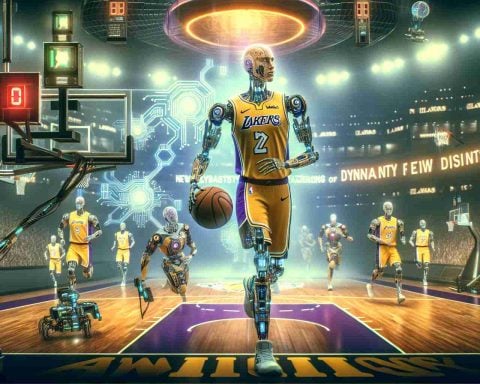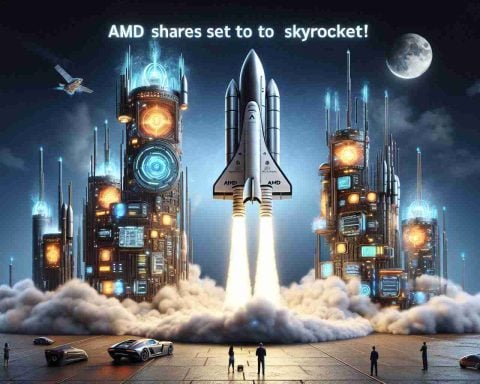- Nvidia’s RTX Neural Texture Compression (NTC) significantly reduces texture memory size by up to 96% compared to traditional methods.
- At 1440p resolution, NTC achieves a remarkable reduction in texture memory from 272MB to 11.37MB.
- While average frame rates are generally strong, minor performance dips occur, especially in demanding 4K scenarios.
- NTC is compatible not only with high-end RTX GPUs but also with older GTX models, promoting broader access.
- The technology aims to enhance visual quality in gaming while keeping memory requirements low.
Step into the future of gaming with Nvidia’s groundbreaking RTX Neural Texture Compression (NTC)! This powerful new technology has just undergone rigorous testing, revealing astonishing results that will have gamers and developers alike on the edge of their seats.
Imagine slashing texture memory size by a jaw-dropping 96%—that’s what NTC delivers when compared to traditional techniques. During benchmarks with an RTX 4090 at both 1440p and 4K, NTC showcased its prowess. At 1440p, enabling DLSS upscaling shrank texture memory from 272MB to just 11.37MB, a staggering 95.8% reduction in size.
However, all this innovation comes with a performance price. While average frame rates remain impressive, particularly in “NTC transcoded to BCn” mode, users experience minor frame dips. When pushing for 4K, the fragility of these numbers becomes more pronounced, with average frame rates plummeting under 1,000 FPS in the most demanding tests.
What’s even more exciting? NTC’s potential doesn’t just rest with high-end RTX GPUs; it can also run on earlier GTX models, opening the door for widespread adoption across platforms, including consoles.
As texture detail skyrockets and memory demands plummet, the gaming landscape is set for a stunning enhancement that prioritizes visual richness without sacrificing too much performance. Keep an eye on Nvidia’s NTC as it progresses from beta—you won’t want to miss what’s next in the realm of next-gen gaming graphics!
Unleashing the Future of Gaming: Nvidia’s Revolutionary RTX Neural Texture Compression
Overview of Nvidia RTX Neural Texture Compression (NTC)
Nvidia’s RTX Neural Texture Compression (NTC) is a game-changer in the realm of gaming graphics technology. It achieves a remarkable 96% reduction in texture memory size compared to conventional methods. This technology was rigorously tested on powerful hardware, particularly the RTX 4090, showcasing its efficiency at both 1440p and 4K resolutions.
At 1440p, the integration of DLSS (Deep Learning Super Sampling) resulted in texture memory usage dropping from 272MB to a mere 11.37MB, representing a staggering 95.8% reduction. This breakthrough has the potential to transform the way textures are managed in gaming, offering rich visuals while minimizing memory usage.
Performance Insights and Limitations
While NTC enhances graphical fidelity, it does come at a cost in performance. While average frame rates are competitive, especially in the “NTC transcoded to BCn” mode, some users noted minor frame dips during gameplay. In demanding scenarios at 4K resolution, performance can suffer drastically, with frame rates dropping below 1,000 FPS, indicating a trade-off between graphical quality and performance stability.
Compatibility and Market Impact
One of the most exciting aspects of NTC is its compatibility with earlier GTX models. This inclusion widens the potential user base significantly, allowing console and PC gamers alike to experience enhanced texture quality without necessarily investing in high-end hardware. With the capability to run on various platforms, NTC could spur widespread adoption and innovation in game development.
FAQs about Nvidia RTX Neural Texture Compression
1. What platforms will Nvidia’s NTC be available on?
NTC will be available on both high-end RTX GPUs and earlier GTX models, making it versatile across various gaming systems, including current consoles.
2. How does NTC compare to other texture compression methods?
NTC significantly outperforms traditional texture compression methods by achieving up to a 96% reduction in texture memory size, enhancing visual fidelity without the typical memory overhead.
3. Will NTC impact gameplay performance?
While NTC enhances texture resolution, users might experience minor frame dips, particularly in high-demand scenarios at 4K. Overall, while average frame rates remain impressive, gamers need to be aware of the potential for reduced performance in certain situations.
Conclusion
Nvidia’s NTC is poised to redefine gaming graphics by offering unprecedented texture quality and memory efficiency. As developers and players prepare for this technology’s rollout from beta, the future looks bright for immersive gaming experiences.
For more information on Nvidia and its latest technologies, visit Nvidia.



















